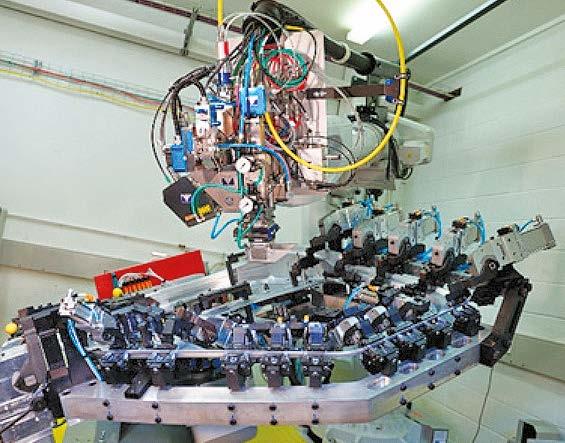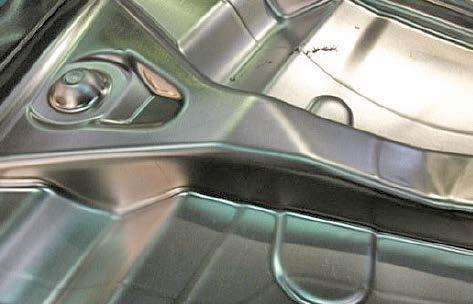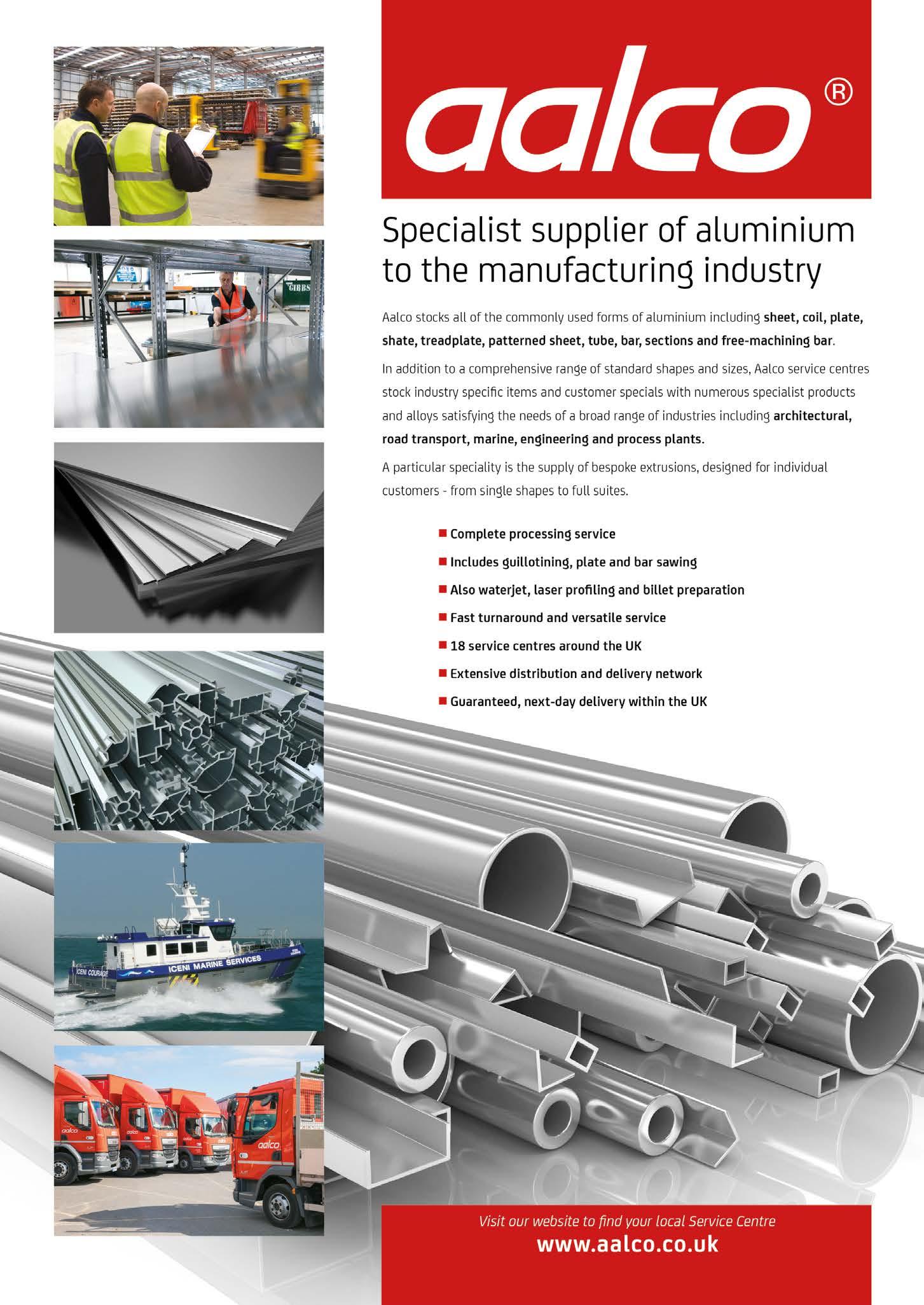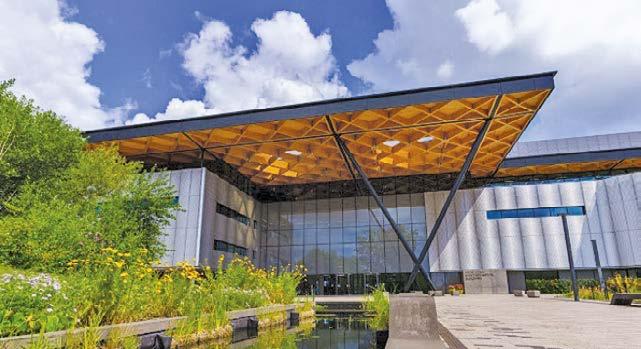
4 minute read
ALUMINIUM RESEARCH AT WMG
WMG is an internationally renowned research and education group, transforming organisations and driving innovation through a unique combination of collaborative research and development alongside pioneering education programmes. An academic department of the University of Warwick, and a centre for the HVM Catapult, WMG was founded by the late Professor Lord Kumar Bhattacharyya in 1980 to help reinvigorate UK manufacturing and improve competitiveness through innovation and skills development.
Since then, WMG has grown significantly and now hosts over 800 staff and nearly 5000 students across five directorates with multiple research themes. Within the Materials and Manufacturing directorate the light alloys research group looks to focus on all areas of aluminium research from alloy development and formability to joining and recycling. At WMG we recognise the important role aluminium will play in the transition towards Net Zero vehicles and are engaged in both fundamental and high technology readiness level studies.
Facilities
WMG has world leading facilities for physical and microstructural characterization with a suite of static load frames from 5-250kN, and dynamic load frames up to 250kN, including a 25kN frame with integrated furnace. This allows for testing ranging from standard tensile tests to fatigue and high-temperature creep. A compact drop tower and VHS test rig provides testing at high strain rates to mimic crash conditions. All systems can be operated with GOM digital image correlation equipment.
The electron microscopy suite features multiple SEMS, Zeiss Sigma FEGSEM including advanced in-situ stages, JEOL 7800F, Scios Dualbeam, Versa 3D Dualbeam, and a Talos F200x TEM with scanning facilities, all combined with the latest analytical sensors and Oxford Aztec software. WMG hosts Buehler in our materials engineering centre with the latest metallographic equipment enabling the preparation of even the trickiest specimens.
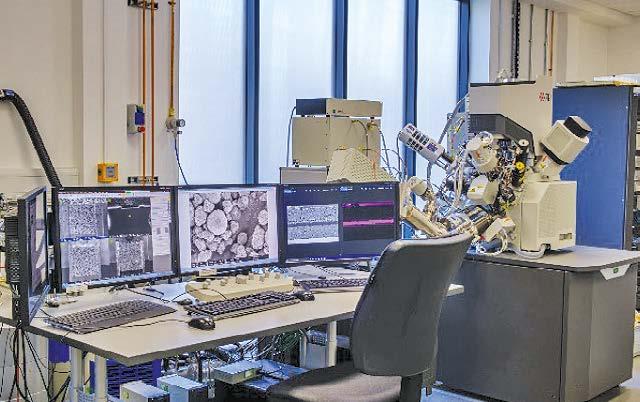
WMG is home to a unique forming capability based around an Interlaken Servopress 225 hydraulic press. The modular design allows for a wide range of tests to be conducted; hole expansion, cross-die, and forming limit curves (FLCs) at room temperature, with gas bulge and FLCs possible up to 600°C. A unique SPF hybrid SPF/ QPF tool and a quenched forming tool allow for characterization and benchmarking of materials under advanced forming conditions.
Along with this are cutting-edge facilities for remote laser welding and a range of physical joining techniques, including self-piercing rivets which were pioneered at WMG. The department hosts several 5-axis CNC machines, as well as EDM machining, and has some of the latest Additive Layer Manufacturing equipment available.
Success Stories
WMG engages with industrial stakeholders and academic partners at all scales, from short-term studies with SMEs to long-term multimillion pound collaborations with international companies. Current partnerships include a three-year Catapult collaboration with Speira Aluminium and a long-term partnership with Jaguar Land Rover. Examples of other collaborations are detailed below. Superform Aluminum – Superform are world leaders in superplastic forming. To maintain this position they identified the need to form higher strength alloys while reducing cycle times. To achieve this they engaged with WMG and sponsored a four-year EngD programme. Advanced electron microscopy stages were used to understand microstructural evolution at high temperatures, the results of which were fed into forming trials utilizing a customdesigned SPF forming tool on the Interlaken press.
The results were then used to directly modify the forming process in the Superform factory. The result of the project was the delivery of a new high-strength aluminium alloy and complementary forming process which has been commercially used since the successful project completion. The forming process optimization at WMG achieved a significant reduction in production cycle times, opening up the potential of using the technology in higher volume applications. The project also demonstrated the ability of low TRL studies utilizing in-situ stages to rapidly inform and improve high TRL processes. process that would deliver a lightweight door panel with wider vision angle and improved driver comfort. The project developed a new fully autogenous remote laser welding process able to produce crack-free welds on both 5XXX and 6XXX aluminium alloys. The synergy between near-field scanning optics and fast modulation of the laser power enabled control of the heat input and hence tailor the weld microstructure. The remote laser welding process has been commercially exploited since the successful project completion.
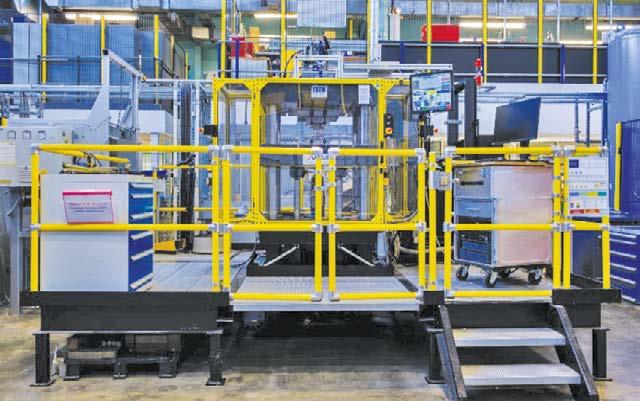
Sarginsons industries Ltd. – WMG’s SME team supports over 300 businesses including Sarginsons, a metal castings foundry that specialise in high-integrity castings as well as CNC machining, with extensive metallurgic and heat treatment expertise. Having identified several key objectives for the next few years Sarginsons approached WMG to help prioritise them and link them up with the right expertise and support.
The process developed by the WMG laser welding team and Digital Lifecycle Management research group achieved 50% less thermal distortion and a 25% reduction in production cycle time compared to tactile laser welding process. The project also demonstrated that by working across the entire research and innovation cycle, from fundamental research, through applied research, to technology development and prototyping, the WMG team can support the adoption of new technology and rapidly de-risk their implementation.
Lightweighting the Future

WMG endeavours to be at the forefront of innovation and to do this we rely on collaboration with industrial partners. Our current research is focused on recycling, advanced characterization, formability, and circular networks around aluminium. However, we are actively looking to engage with industrial partners involved with any aluminium technologies, from small focussed short-term research projects to larger multi-year collaborations.
If you would like to discuss any potential projects please contact Dr Scott Taylor, scott.taylor.1@warwick.ac.uk for general enquires or WMGSME@warwick.ac.uk for SME enquiries.
With an ongoing mission to improve and create USPs in the business, for the first project they wanted to discover if creating a cooling channel insert in one of their die-casting processes could improve the integrity, quality, and performance of parts. Using CAD and CFD modelling, WMG were able to simulate a variety of cooling scenarios to identify what process would be feasible and if the insert could be developed using Additive Manufacturing. Following that a series of tests are underway to find out which materials are best suited to 3D print tooling. This initial work has led to other strategic opportunities including a £50k collaborative-funding bid. The expected impact is a significant reduction in energy consumption and material waste, with associated reduction in carbon emissions.
Jaguar Land Rover – With the support of a multimillion investment from the Advanced Propulsion Centre and HVM Catapult, Jaguar Land Rover teamed up with WMG to develop a novel laser welding
